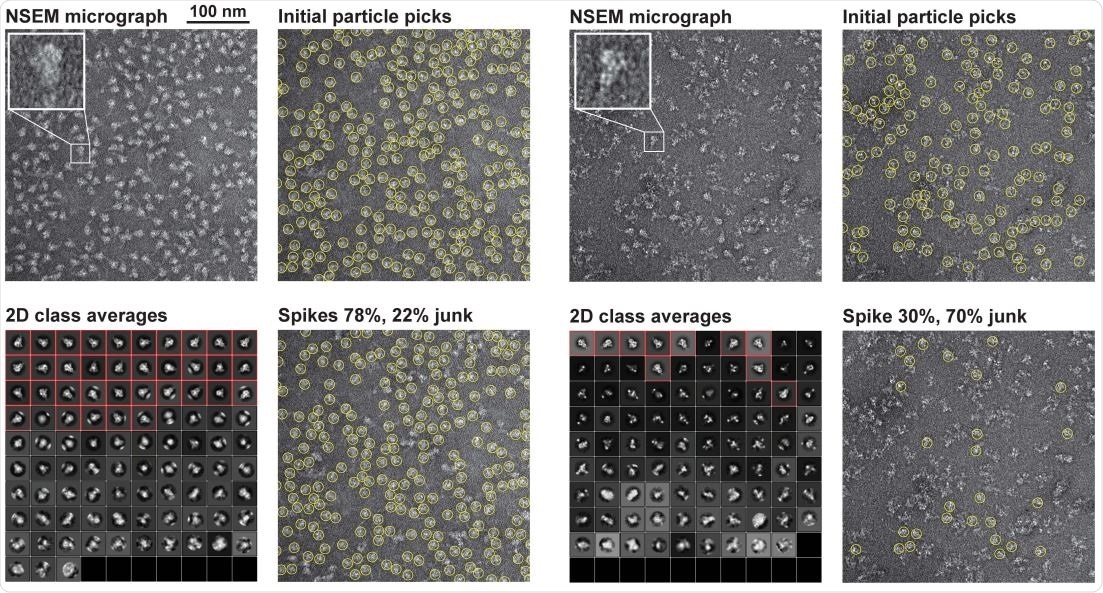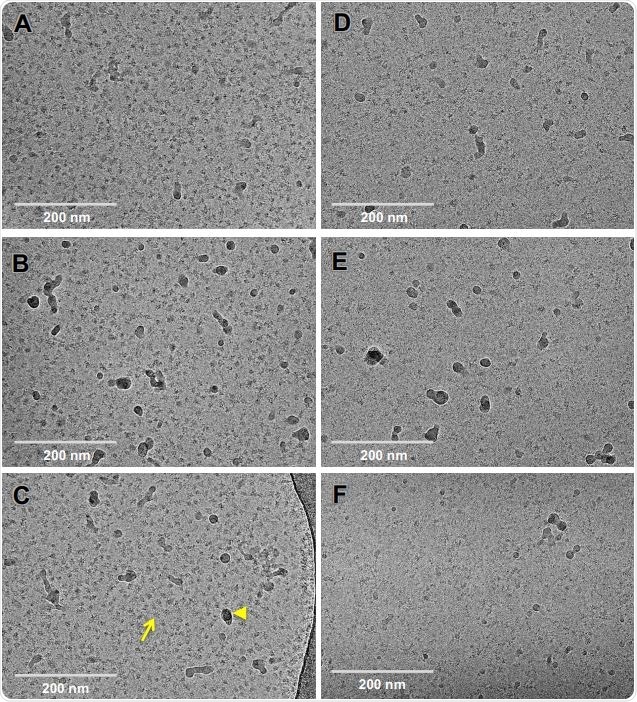Researchers at Duke University in Durham, USA, have made an important discovery about the spike protein on severe acute respiratory syndrome coronavirus 2 (SARS-CoV-2) that could have a broad impact on vaccine studies.
The spike protein is the structure that binds to host cell angiotensin-converting enzyme 2 (ACE2) to enable viral attachment and entry during the infection process.
Robert Edwards and colleagues have now demonstrated that storage temperature impacts the stability of the ectodomain on this spike protein, which significantly affects its ability to bind ACE2.
Compared with storage at 22 °C or 37 °C, storage at 4 °C decreased the stability of the ACE-2 binding site and increased its exposure.
This cold storage significantly altered the antigenicity of the SARS-CoV-2 spike protein, while incubation at 37 °C quickly restored Spike integrity.
The researchers say the findings could directly impact vaccine development studies that involve readouts of antigenic and binding measures.
A pre-print version of the paper is available on the server bioRxiv*, while the article undergoes peer review.
Spike protein is the main target in vaccine development studies
The rapid spread and devastating impact of the COVID-19 pandemic have spurred urgent efforts to develop vaccines to protect against SARS-CoV-2 infection.
The spike protein, which mediates viral fusion and entry, is the main target in vaccine research and development studies.
“This highly dynamic protein exhibits substantial conformational flexibility, transitioning between pre-fusion “down” and “up” states that alter the initial accessibility of the receptor-binding domain (RBD), and subsequently transitioning to a post-fusion conformation that mediates fusion of viral and cellular membranes,” write Edwards and colleagues.
Researchers have developed stabilized spike ectodomain constructs with a native-like structure that resembles the ectodomain found on SARS-CoV-2.
These ectodomain constructs, with their ability to bind ACE-2 and present surface epitopes for neutralizing antibodies, are widely used to study the spike protein and the mechanisms underlying viral entry and immune evasion.

Purification and quality control of the SARS-CoV-2 S protein ectodomain for vaccine studies. Spike preparations that otherwise appear to be of similar quality by SEC (top, left) and SDS-PAGE (top, right). Representative micrographs from each prep are shown middle left. Protein appears as white blobs on gray background. Insets show a single kite-shaped spike particle enlarged. At the middle right, automatic particle picking is shown as yellow circles superimposed on the micrograph. Sets of ~20,000 initial particle picks are subjected to automated 2D classification to group together and average particles with similar features into discrete classes, bottom left. In the 2D class averages for each sample, the classes that contain the SARS-Cov-2 S ectodomain (shown within red boxes) can be clearly distinguished from classes that contain junk. The final spike picks come from the particles contained within the indicated classes and their total number provide an estimate of the ratio between the SARS-CoV-2 S ectodomain and junk seen in the NSEM sample.

 This news article was a review of a preliminary scientific report that had not undergone peer-review at the time of publication. Since its initial publication, the scientific report has now been peer reviewed and accepted for publication in a Scientific Journal. Links to the preliminary and peer-reviewed reports are available in the Sources section at the bottom of this article. View Sources
This news article was a review of a preliminary scientific report that had not undergone peer-review at the time of publication. Since its initial publication, the scientific report has now been peer reviewed and accepted for publication in a Scientific Journal. Links to the preliminary and peer-reviewed reports are available in the Sources section at the bottom of this article. View Sources
Tracking the behavior of spike under different storage conditions
Using negative stain electron microscopy to track the behavior of the spike protein under different storage conditions, the researchers showed that the spike fraction was an average of 75% on freshly prepared spike samples. This decreased to 64% with one cycle of freezing and thawing and further decreased to 59% after storage at room temperature for one week. Storage at 37 °C for one week, on the other hand, increased the spike fraction to 83%.
However, Roberts and colleagues were surprised to find that storing the samples at 4°C dramatically decreased the fraction of intact spike to just 5%. This degraded spike could be restored through incubation at 37 °C for three hours.
Checking the reduced spike fraction was not related to pH
Since the spike ectodomain has previously been shown to undergo conformational changes according to pH, the team tested whether the degradation they observed was due to a temperature-dependent pH change that would be expected for the Tris buffer they used.
Applying size exclusion chromatography, they purified one fraction of a split spike preparation into Tris buffer pH 8.0 and the other fraction into MOPS buffer pH 7.4.
However, after one-week of storage in the Tris buffer at room temperature and in the MOPS buffer at 4 °C, there was no significant difference in spike fraction reductions, compared with those previously observed.
“Thus, the primary cause of spike degradation here appears to be the temperature change and not the pH shift,” the authors confirm.
Cold storage destabilized spike
Further analysis by differential scanning fluorimetry showed that the reduction in spike fraction following cold storage was accompanied by distinct profile shifts, indicating decreased stability of spike with storage at 4 °C.
To check that the observed cold-sensitivity was not merely an artifact of the negative stain sample preparation, the researchers also measured stability using differential scanning calorimetry.
This confirmed that storage at 4 °C destabilizes spike, compared with storage at 22 °C or 37 °C, and that incubation at 37 °C for 3 hours substantially restored its stability.
Next, the team used ELISA to test the effects of this cold-induced instability on ACE2 binding.
Spike stored at 4 °C exhibited higher binding to ACE-2 and an RBD-directed antibody that both require the protein to be in the “up” RBD conformation. Furthermore, an antibody isolated from a convalescent COVID-19 patient that was mapped to the ACE-2 binding site showed higher levels of binding to spike that had been stored at 4 °C.

Effect of SARS-CoV-2 ectodomain spike sample storage on cryo-EM specimen preparation. (A-C) Representative cryo-EM micrographs of a SARS-CoV-2 S ectodomain sample that was flash frozen immediately after purification and stored in -80 °C, then thawed rapidly and incubated for ~ 5 min at 37 °C immediately prior to grid preparation. Cryo-EM images are low contrast, and the desired spike particles appear as medium gray spots (e.g. arrow) on a light gray background. Dark gray or black spots are slight ice contamination (e.g arrowhead). These panels on the left show an excellent distribution of discrete spike particles. (D-F) Representative cryo-EM micrographs of SARS-CoV-2 S ectodomain samples that were stored for ~1 week at 4 °C prior to grid preparation. Compared to the panels of the left, these panels on the right show a sparse field-of-view with very few intact spike particles visible. A similar spike concentration (~1 mg/ml) was used to freeze all the samples. Micrographs were collected on a Titan Krios microscope with a Gatan K3 camera.
A temperature-sensitive ectodomain has “direct implications for vaccine studies”
The team says the findings show that storage temperature has a significant impact on stability and, in turn, the antigenic and binding properties of the SARS-CoV-2 ectodomain.
“The results presented here suggest a highly malleable internal architecture of the spike ectodomain consistent with its dynamic nature and our findings that point at a fragile and temperature-sensitive ectodomain have direct implications for vaccine studies,” concludes the team.

 This news article was a review of a preliminary scientific report that had not undergone peer-review at the time of publication. Since its initial publication, the scientific report has now been peer reviewed and accepted for publication in a Scientific Journal. Links to the preliminary and peer-reviewed reports are available in the Sources section at the bottom of this article. View Sources
This news article was a review of a preliminary scientific report that had not undergone peer-review at the time of publication. Since its initial publication, the scientific report has now been peer reviewed and accepted for publication in a Scientific Journal. Links to the preliminary and peer-reviewed reports are available in the Sources section at the bottom of this article. View Sources
Article Revisions
- Mar 23 2023 - The preprint preliminary research paper that this article was based upon was accepted for publication in a peer-reviewed Scientific Journal. This article was edited accordingly to include a link to the final peer-reviewed paper, now shown in the sources section.